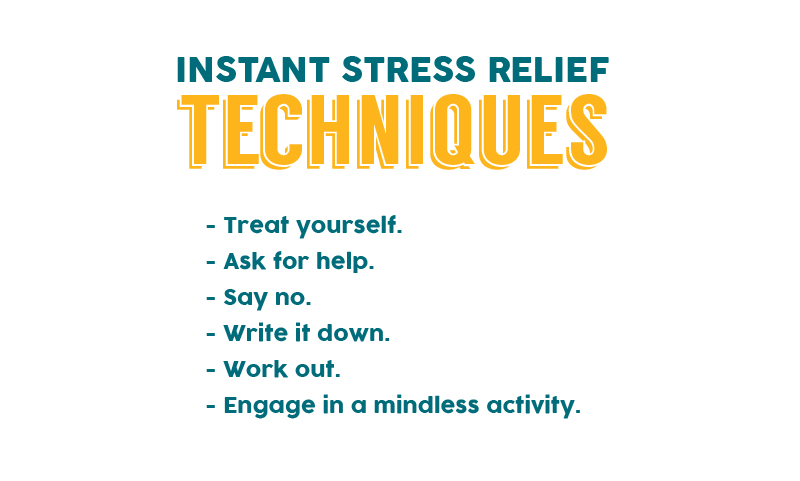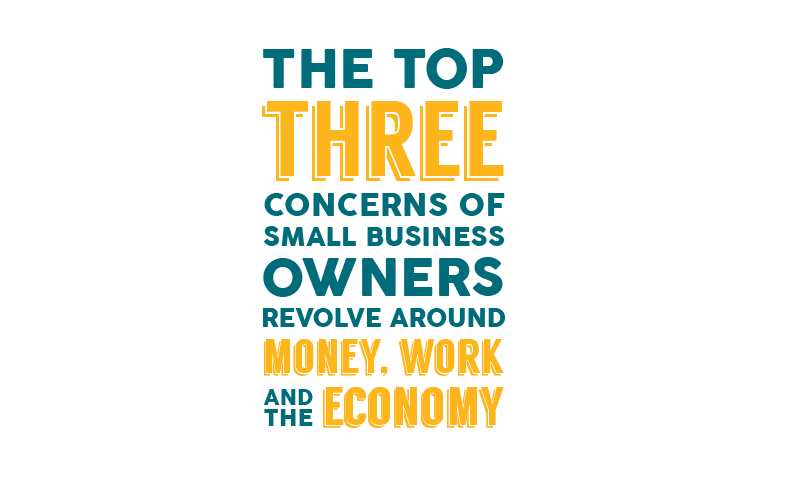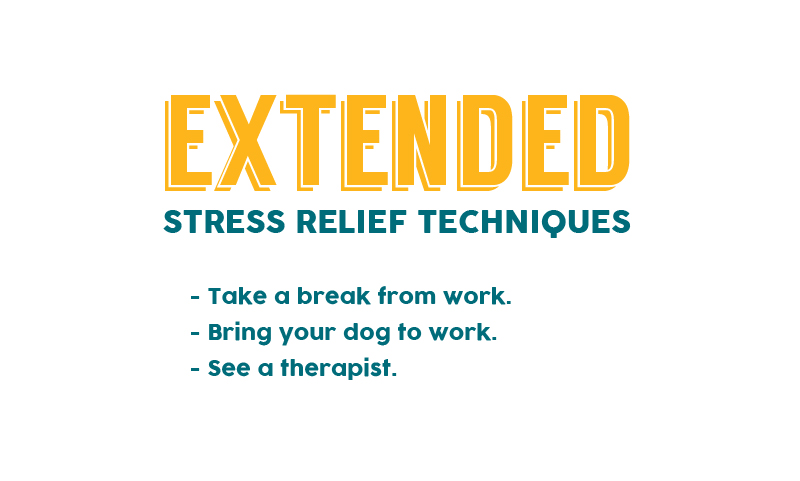11 Effective Stress Management Techniques For Leaders
Small business owners may just be the hardest and longest working and people in our economy.
You understand why you’re stressed.
The life of a small business owner is tough.
There’s the unpredictable income factor, high level of responsibility, lack of understanding from your support system, failing to have a work-life balance and a million other reasons.
With that being said, for most entrepreneurs, the pros, such as being your own boss and setting your own hours, far outweigh the cons.
While these are amazing positives, it doesn’t mean you should always brush off the negatives. You need to evaluate what stresses you out, understand what triggers those stressors and learn how to rid yourself of them before the sweat pellets begin dripping down your face.
If you are facing stress from your small business, try one of these 11 stress management techniques listed below. We broke it up into three categories: instant relief, almost-instant relief and extended or delayed relief.
Instant relief techniques

Treat Yourself.
One day a year, you should #TreatYoSelf, and you should start by watching this snippet about treating yoself from Parks and Recreation.
One fantastic way to reduce stress and treat yourself is through massage therapy. According to Huffington Post, massages reduce levels of the stress hormone cortisol, resulting in better moods and frequently lower blood pressure. It also boosts the neurotransmitters serotonin and dopamine, which are involved in depression or anxiety.
Invest in employee scheduling software, you can boost productivity at your organization and use the time you save to grow other areas of your business.
Ask for help.
Do any of these stats sound familiar to you?
- Half of all business owners take off only major holidays.
- Forty-six percent of small business owners took a vacation in 2011.
- Thirty-three percent worry their clients will not receive good customer service if they take a vacation.
According to Jeffrey Pfeffer, author of What Were They Thinking?: Unconventional Wisdom About Management, the most important task you have as a leader is to train people how to think and ask the right questions so you can take a day off once in a blue moon. Pfeffer says delegation is highly underutilized in business.
Here’s how HBR suggests getting started delegating:
- Learn why you aren’t delegating
- Hire the best people
- Ask teammates to hold you accountable
Say no.
If you schedule everything on your calendar and plan out your week on Sunday night it will significantly reduce your inability to just say “No, I’m too busy.” You can even put the blame on your calendar by making your calendar public for requesters of your precious time to see you’re not lying, when you tell them you’re too busy to do what they need right now.
Write it down.
Writing things down can really help. Just read this little nugget from Reader’s Digest.
Writing provides perspective, says Paul J. Rosch, M.D., president of the American Institute of Stress in Yonkers, NY. Divide a piece of paper into two parts. On the left side, list the stressors you may be able to change, and on the right, list the ones you can’t. “Change what you can,” Dr. Rosch suggests, “and stop fretting over what you can’t.”
Work out.
According to Bolt Insurance’s A Fine Line Between Life and Work infographic, 44 percent of small business owners say the stress of their business has damaged their health. The same survey discovered:
- 33 percent of entrepreneurs exercised less
- 22 percent gained weight
- 14 percent became short-tempered
Exercise may be the one most recommended stress coping mechanisms by healthcare professionals because it can instantly improve your mood by producing mood-enhancing endorphins, and it improves sleep, which many small business owners lack enough of.
Even five minutes of aerobic exercise can stimulate anti-anxiety effects, according to the Anxiety and Depression Association of America (ADAA).
Engage in a mindless activity.
After a long day of grueling work, it can feel amazing to simply do nothing and engage in a mindless activity. Individuals’ favorite activities to unwind, include listening to music, browsing online and watching tv, videos or movies.
Almost instant relief techniques
Create a swipe file of good times.
This technique is my favorite because it works for me all of the time. First, for those of you who don’t know, a stress-remover swipe file is collection of tested and proven links to photos, articles, videos or whatever it is that makes you smile, feel inspired or even, brace yourself, laugh.
I utilize Pocket for my feel-good Swipe file, and over time, I’ve learned exactly which picture I can scroll to, which video will reinvigorate my drive and which article will give me the motivation I need to keep going. This is why it’s an almost instant relief technique – because it takes time to know what makes you feel a certain way and to, of course, accumulate these links.
Utilize phone and web apps.
According to Happify’s How to Beat Stress and Boost Happiness infographic, the top three concerns of small business owners revolve around: money, work and the economy.

Fortunately, there’s an app for that – or for those. I can’t lie. I’m an avid app and tool lover.
When people ask me: Don’t you find it overwhelming to use so many tools?
I reply with a resounding “No way.” Every tool I use makes my life simpler or automates another process for me so I don’t have to think about it. Utilize all of this amazing (and FREE) technology around you for your benefit.
Extended relief techniques

Take a break from work.
According to the same infographic by Bolt, mentioned above, in 2011, only 46 percent of small business owners took a full week of vacation that summer.
You need a vacation after working so hard around the clock, and a nine-year study recently discovered that men, who took at least one vacation annually were nearly 30 percent less likely to die from a heart-related cause, as opposed to the workhorses.
Bring your dog to work.
My father brings his dog to work everyday, and I know it makes him happier. He’s not alone. Co-working spaces, such as WeWork are becoming more and more dog friendly as I see photos of workers’ furry friends shared on its closed community feed daily.
Harvard Medical School even added Cooper, a four-year-old Shitzu, to its therapy team in order to mitigate midday stress in the office.
See a therapist.
The same infographic by Happify reports that 68 percent of people say that visiting a mental health professional for help managing stress was extremely or very effective.
Therapy or life coaching is an extended relief technique because while the results of it can be felt in your first meeting, it’s ultimately going to take time to feel overwhelmingly better.
What’s your biggest stressor right now with your small business? Do you think any of these techniques can help reduce them for you?






